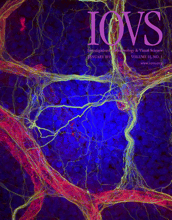Lo stress ossidativo responsabile del danno cellulare secondario alla produzione di ROS (reactive oxygen species), gioca un ruolo fondamentale in numerose patologie degenerative senili oculari e sistemiche. Un’aumentata esposizione del tessuto vascolare ai ROS è spesso associata a una disfunzione dell’endotelio, con conseguente riduzione dei processi di dilatazione vascolare, incremento delle cellule infiammatorie, incremento dell’adesione piastrinica e della coagulazione. Gli stessi autori in un precedente articolo hanno evidenziato, in un modello sperimentale, come la risposta del flusso ematico retinico all’iperossia possa diminuire dopo la somministrazione di lipopolisaccaridi (LPS).
Nel presente studio si ipotizza come tale effetto possa essere ridotto dalla contemporanea somministrazione di antiossidanti. In un gruppo di 21 soggetti sani sono stati valutati quotidianamente i parametri relativi al flusso ematico retinico e la reazione dello stesso all’iperossia pre e post infusione di 2 ng/Kg di LPS; successivamente i soggetti hanno assunto antiossidanti orali o placebo per 14 giorni. Nei soggetti che hanno assunto terapia antiossidante in base alla formulazione AREDS (Age-Related Eye Disease Study) è stato evidenziato come, dopo tale somministrazione, lo stress ossidativo e la conseguente alterazione endoteliale ROS-indotta sia diminuita e/o scomparsa con ripristino del normale flusso retinico e della funzionalità vascolare.
Berthold Pemp; Elzbieta Polska; Katharina Karl; Michael Lasta; Alexander Minichmayr; Gerhard Garhofer; Michael Wolzt; Leopold Schmetterer
Investigative Ophthalmology & Visual Science
January 2010, Volume 51, 2-6.
Purpose.: The Age-Related Eye Disease Study (AREDS) has shown that supplementation of antioxidants slows the progression of age-related macular degeneration (AMD). The mechanism underlying this therapeutic effect may be related to a reduction of reactive oxygen species (ROS). The authors have recently introduced a model showing that the response of retinal blood flow (RBF) to hyperoxia is diminished by administration of lipopolysaccharide (LPS). In the present study, the hypothesis was that this response can be restored by the AREDS medication.
Methods.: Twenty-one healthy volunteers were included in this randomized, double-masked, placebo-controlled, parallel group study. On each study day, RBF and the reactivity of RBF to hyperoxia were investigated before and after infusion of 2 ng/kg LPS. Between the two study days, subjects took either the AREDS medication or placebo for 14 days.
Results.: After administration of LPS reduced retinal arterial vasoconstriction during hyperoxia (AREDS group: 12.5% ± 4.8% pre-LPS vs. 9.4% ± 4.6% post-LPS; placebo group: 9.2% ± 3.3% pre-LPS vs. 7.1% ± 3.5% post-LPS) and a reduced reactivity of RBF during hyperoxia (AREDS: 50.4% ± 8.9% vs. 44.9% ± 11.6%, placebo: 54.2% ± 8.6% vs. 46.0% ± 6.9%) was found. The reduced responses were normalized after 2 weeks of AREDS antioxidants but not after placebo (vasoconstriction: 13.1% ± 4.5% vs. 13.1% ± 5.0% AREDS, 11.2% ± 4.2 vs. 7.4% ± 4.2% placebo; RBF: 52.8% ± 10.5% vs. 52.4% ± 10.5% AREDS, 52.4% ± 9.3% vs. 44.2% ± 6.3% placebo).
Conclusions.: The sustained retinal vascular reaction to hyperoxia after LPS in the AREDS group indicates that antioxidants reduce oxidative stress–induced endothelial dysfunction, possibly by eliminating ROS. The model may be an attractive approach to studying the antioxidative capacity of dietary supplements for the treatment of AMD (ClinicalTrials.gov number, NCT00431691).

 Effects of Antioxidants (AREDS Medication) on Ocular Blood Flow and Endothelial Function in an Endotoxin-Induced Model of Oxidative Stress in Humans
Effects of Antioxidants (AREDS Medication) on Ocular Blood Flow and Endothelial Function in an Endotoxin-Induced Model of Oxidative Stress in Humans